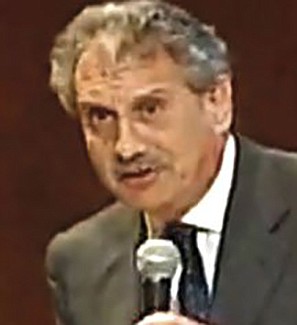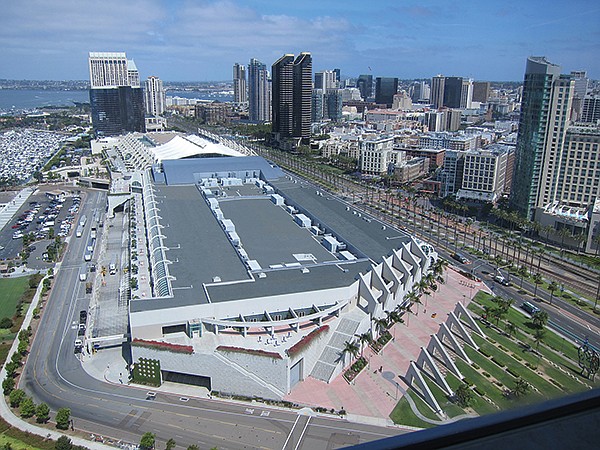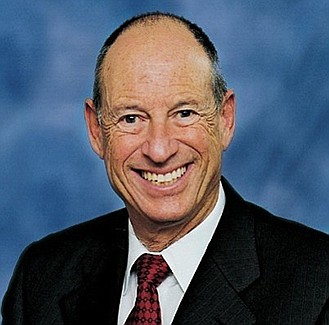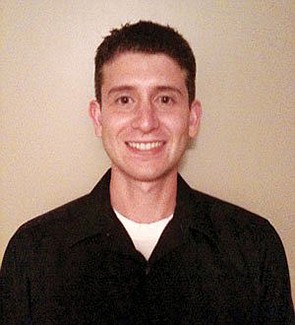 Facebook
Facebook
 X
X
 Instagram
Instagram
 TikTok
TikTok
 Youtube
Youtube

On May 7, city-council members wailed that they had been knifed from behind. They claimed to be finding out for the first time that the San Diego Convention Center had defaulted on an agreement to keep its mitts on a six-acre parcel that would be essential for construction of a contiguous expansion.

The center’s management had decided to default on a balloon payment of more than $13 million. The property owners are playing hardball. “I have seen a demand letter,” says Jeff Kawar, deputy director of the Office of the Independent Budget Analyst. The owners’ lawyers “are threatening to foreclose.”
Councilmembers warned that there may never be a contiguous expansion. So did the media, even though center management says a deal can still be made. Former councilmember Carl DeMaio sounded the alarm on his radio show, penned an op-ed, and sent it to his mailing list, saying, “This is a big deal and is critical for our local economy.”
Actually, an expansion, contiguous or noncontiguous, is not critical to the local economy. That’s because there is no credible evidence that a bigger facility would bring in more attendance. On May 5, two days before the traumatizing council meeting, the Office of the Independent Budget Analyst issued a report showing that the center is suffering from both physical and financial shabbiness and lacks the means to fix the physical deterioration. Indeed, Kawar’s reports over the last three years have shown how the center’s finances were looking ever more ragged.
The budget analyst report probed the center’s 2016 budget. Among the many things that stood out was this: next year, the gross building rent is expected to be $14.4 million. Subtract $5.6 million of that sum as “rent credits,” or price cuts to convention customers, and the total is $8.8 million. The center plans to discount its prices by almost 40 percent next year.

“Everybody in the industry is discounting — including some down to zero,” says Heywood Sanders, the ranking expert on convention centers. The University of Texas at San Antonio professor warned of a convention-center glut in a seminal 2005 paper for the Brookings Institution. Last year, his book Convention Center Follies: Politics, Power, and Public Investment in American Cities told the story of the goofy industry arms race. Even industry leaders are warning that the price cuts are splashing red ink all over centers’ books.
Attendance is growing at only 1 to 2 percent a year, but new centers continue to be built or existing centers expanded. Thus, there is vicious price-cutting in a highly competitive market. “If you have to give the place away, what is the likelihood you will be able to get any real and continuing increase from an expansion?” Sanders asks.
Kawar was responsible for the budget analyst study. He notes another factor: next year, the center projects that gross rent will rise $527,000 and the rental credits, or discounts, will increase $516,000. “Yes, rents increase, but they increase about the same amount as rent discounts. I thought that was interesting,” says Kawar.
Just as interesting is “the lack of a plan to address the growing backlog of capital needs at the Convention Center,” the report notes. This has been happening at the same time as operating reserves have been depleted.
In 2008, the reserve fund peaked at $8 million. But the center’s staff gobbled that up planning for an expansion; the money went for rights to purchase the expansion site, feasibility analyses, and payments to design consultants. Kawar says, however, that reserves were increased last year, and there are plans to boost them this year and next year. The dilemma: “You need to restore healthy reserves, but you also have to [take care of] capital needs.” No funds have been budgeted to address the $3.9 million in capital needs next year.

The center has $32 million in long-term capital needs over five years, such as fixing the rips and stains in the sails in the rooftop sails pavilion.

“What is not addressed is the $32 million and how to fund that,” says Kawar, and even Steve Cushman, chairman of the center, admits that the convention center doesn’t generate enough capital to pay for deferred maintenance.
The center normally gets $3.4 million from the city. Now it wants that boosted to more than $7 million. Kawar, for one, questions whether the gift will be forthcoming. The center’s management is also discussing whether it could wangle money from the California Infrastructure and Economic Development Bank, called the “IBank.” The bank, located within the governor’s office, provides financing to state institutions through such methods as issuing tax-exempt and taxable revenue bonds.
The center’s dismal financial condition is greatly a function of the price slashes caused by the industry glut. Will an expansion attract more business? Says Sanders, “The dilemma is, if you are expanding in an environment in which the business is growing slowly, and it is clearly oversupplied, and you know other [cities] are expanding, the likelihood of getting new business is slim to none, particularly when Anaheim, San Francisco, Los Angeles, and Seattle are expanding.”

As usual, the convention center did not answer the questions I submitted. But Vlad Kogan, who got his PhD in political science at the University of California San Diego and is now an assistant professor at Ohio State, still follows San Diego and can see the center’s point of view.
The convention center is “in a situation in which you have to run faster just to stay where you are. [Other centers] are expanding, upgrading amenities like installing better Wi-Fi. If you don’t expand, you may lose market share,” says Kogan. But on the other hand, he says, the fact that the convention center is “not bringing in enough revenue to keep it up undermines the argument that this is a great business for the city.”
The center wants to bring in more revenue by selling naming rights. How would you like the alliterative Coca-Cola Convention Center Corporation, home of Comic-Con? The county grand jury correctly says the center needs more oversight from city officials and has to be more transparent about its finances. The grand jury report cites ways in which the center has juggled its books.


On May 7, city-council members wailed that they had been knifed from behind. They claimed to be finding out for the first time that the San Diego Convention Center had defaulted on an agreement to keep its mitts on a six-acre parcel that would be essential for construction of a contiguous expansion.

The center’s management had decided to default on a balloon payment of more than $13 million. The property owners are playing hardball. “I have seen a demand letter,” says Jeff Kawar, deputy director of the Office of the Independent Budget Analyst. The owners’ lawyers “are threatening to foreclose.”
Councilmembers warned that there may never be a contiguous expansion. So did the media, even though center management says a deal can still be made. Former councilmember Carl DeMaio sounded the alarm on his radio show, penned an op-ed, and sent it to his mailing list, saying, “This is a big deal and is critical for our local economy.”
Actually, an expansion, contiguous or noncontiguous, is not critical to the local economy. That’s because there is no credible evidence that a bigger facility would bring in more attendance. On May 5, two days before the traumatizing council meeting, the Office of the Independent Budget Analyst issued a report showing that the center is suffering from both physical and financial shabbiness and lacks the means to fix the physical deterioration. Indeed, Kawar’s reports over the last three years have shown how the center’s finances were looking ever more ragged.
The budget analyst report probed the center’s 2016 budget. Among the many things that stood out was this: next year, the gross building rent is expected to be $14.4 million. Subtract $5.6 million of that sum as “rent credits,” or price cuts to convention customers, and the total is $8.8 million. The center plans to discount its prices by almost 40 percent next year.

“Everybody in the industry is discounting — including some down to zero,” says Heywood Sanders, the ranking expert on convention centers. The University of Texas at San Antonio professor warned of a convention-center glut in a seminal 2005 paper for the Brookings Institution. Last year, his book Convention Center Follies: Politics, Power, and Public Investment in American Cities told the story of the goofy industry arms race. Even industry leaders are warning that the price cuts are splashing red ink all over centers’ books.
Attendance is growing at only 1 to 2 percent a year, but new centers continue to be built or existing centers expanded. Thus, there is vicious price-cutting in a highly competitive market. “If you have to give the place away, what is the likelihood you will be able to get any real and continuing increase from an expansion?” Sanders asks.
Kawar was responsible for the budget analyst study. He notes another factor: next year, the center projects that gross rent will rise $527,000 and the rental credits, or discounts, will increase $516,000. “Yes, rents increase, but they increase about the same amount as rent discounts. I thought that was interesting,” says Kawar.
Just as interesting is “the lack of a plan to address the growing backlog of capital needs at the Convention Center,” the report notes. This has been happening at the same time as operating reserves have been depleted.
In 2008, the reserve fund peaked at $8 million. But the center’s staff gobbled that up planning for an expansion; the money went for rights to purchase the expansion site, feasibility analyses, and payments to design consultants. Kawar says, however, that reserves were increased last year, and there are plans to boost them this year and next year. The dilemma: “You need to restore healthy reserves, but you also have to [take care of] capital needs.” No funds have been budgeted to address the $3.9 million in capital needs next year.

The center has $32 million in long-term capital needs over five years, such as fixing the rips and stains in the sails in the rooftop sails pavilion.

“What is not addressed is the $32 million and how to fund that,” says Kawar, and even Steve Cushman, chairman of the center, admits that the convention center doesn’t generate enough capital to pay for deferred maintenance.
The center normally gets $3.4 million from the city. Now it wants that boosted to more than $7 million. Kawar, for one, questions whether the gift will be forthcoming. The center’s management is also discussing whether it could wangle money from the California Infrastructure and Economic Development Bank, called the “IBank.” The bank, located within the governor’s office, provides financing to state institutions through such methods as issuing tax-exempt and taxable revenue bonds.
The center’s dismal financial condition is greatly a function of the price slashes caused by the industry glut. Will an expansion attract more business? Says Sanders, “The dilemma is, if you are expanding in an environment in which the business is growing slowly, and it is clearly oversupplied, and you know other [cities] are expanding, the likelihood of getting new business is slim to none, particularly when Anaheim, San Francisco, Los Angeles, and Seattle are expanding.”

As usual, the convention center did not answer the questions I submitted. But Vlad Kogan, who got his PhD in political science at the University of California San Diego and is now an assistant professor at Ohio State, still follows San Diego and can see the center’s point of view.
The convention center is “in a situation in which you have to run faster just to stay where you are. [Other centers] are expanding, upgrading amenities like installing better Wi-Fi. If you don’t expand, you may lose market share,” says Kogan. But on the other hand, he says, the fact that the convention center is “not bringing in enough revenue to keep it up undermines the argument that this is a great business for the city.”
The center wants to bring in more revenue by selling naming rights. How would you like the alliterative Coca-Cola Convention Center Corporation, home of Comic-Con? The county grand jury correctly says the center needs more oversight from city officials and has to be more transparent about its finances. The grand jury report cites ways in which the center has juggled its books.
Comments